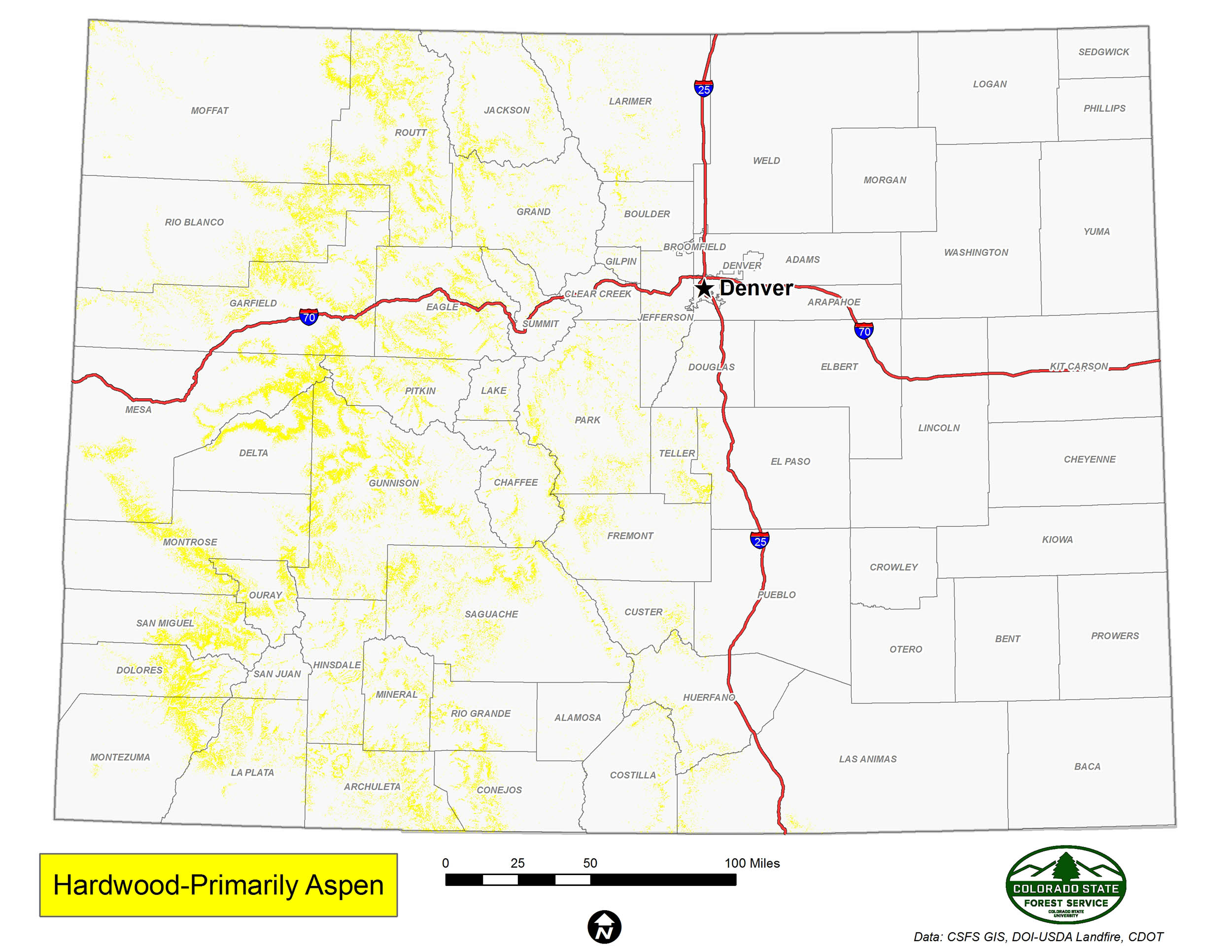Hardwood – Primarily Aspen
Aspen is another of Colorado’s extensive forest types, covering 5 million acres or 20 percent of the state’s forested land. Aspen, known as quaking aspen, are Colorado’s only widespread, native, deciduous tree and can be found from 6,500 to 11,500 feet in elevation, particularly on the West Slope.
Click on the map to view full size
The aspen’s (Populus tremuloides) delicate leaves and vibrant fall color often are displayed as a symbol of Colorado itself. Aspen can occur over a wide variety of sites ranging from dry, high-elevation grasslands to poorly drained meadow sites.
The sun-loving aspen regenerates through sprouts or suckers that are produced by its roots in response to increased soil or root temperatures. Because of this sprouting response, aspen often is first to colonize forest clearings, burns or other disturbed sites. As stands grow, and shade on the site increases, conifer species begin to invade and may eventually replace the aspen.
The open canopy of aspen stands, which allows sunlight to reach the forest floor, leads to a more lush understory than that of neighboring conifers. Drier groves generally consist of grasses, with some wildflowers and medium-sized shrubs such as ninebark or cinquefoil. Wetter forests have an abundance of wildflowers, including meadow rue, arnica, lupine and paintbrush, and sometimes a thicker shrub layer consisting commonly of snowberry or wild rose.
Threats to Aspen
While aspen’s thin, living bark makes it prone to a host of insect pests and diseases, the primary threats to Colorado’s aspen forests are fire suppression and chronic animal browsing (especially by elk) of young aspen shoots. A recent wave of aspen die-off (referred to as “sudden aspen decline”) has caused additional concern in some parts of the state. Scientists suspect drought, warmer temperatures, aspect and elevation are strong factors in this decline, although tree age also is a factor. Research on this issue is ongoing.
The Importance of Aspen
Human uses of aspen forests include cattle and sheep grazing, recreation, hunting and harvesting of wood products. Aspen is a preferred species for paneling, veneer products such as matchsticks and chopsticks, fiberboard, excelsior, animal bedding and decorative gifts.
Colorado’s aspen forests also provide essential wildlife habitat and are second only to riparian areas in terms of biodiversity richness. Along with their keystone wildlife species, the beaver, aspen forests are particularly important to cavity-nesting woodpeckers and songbirds, birds of prey and game birds.
Learn More
Data Sources
NatureServe. 2018. International Ecological Classification Standard: Terrestrial Ecological Classifications. NatureServe Central Databases. Arlington, VA. U.S.A. Data current as of 28 August 2018.
2017 Colorado Wildfire Risk Assessment, Colorado State Forest Service.


